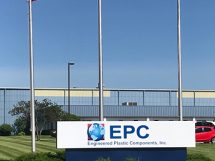
RICHMOND, Ky. (Sept. 6, 2012) — A $120,000 grant has been issued to study future uses of the Blue Grass Army Depot’s weapons disposal plant after the weapons are gone, the Richmond Register reports.
Craig Williams, a member of the Chemical Destruction Community Advisory Board (CDCAB), announced the project Wednesday.
“Some (chemical weapons storage) sites didn’t prepare,” he said. “You can read stories in the newspaper in places like Anniston (Alabama) and elsewhere. Headlines read, ‘900 workers to be laid off.’ We’re not going to do that here. There will be about $1 billion worth of infrastructure remaining (after the weapons are destroyed.) There also will be hundreds of workers, many of them highly skilled. We want to start now to find out how we can keep as many of them here as we possibly can. The way that we’re going to do that is this study that we’re launching today.”
Funding for the first phase of the plan came through the Kentucky Education and Workforce Development Cabinet, the paper says.
The strategic plan will help ensure the sustainability of the depot, according to David Duttlinger, a representative of the Blue Grass Area Development District.
The first phase of the plan will be a job-loss aversion study and the second phase will be an analysis of the site’s existing infrastructure. Phase three is developing a strategy to repurpose the facilities upon completion of the program, the Register reports.
The Blue Grass Chemical Activity, a tenant organization of the depot that reports to the U.S. Army Chemical Materials Activity, is responsible for the safe, secure storage of the chemical weapons stockpile stored at the depot, which comprises 523 tons of nerve agents GB and VX, and mustard agent in projectiles, warheads and rockets.
A weapons disposal plant is being built to destroy the weapons. The technology known as neutralization followed by supercritical water oxidation (SCWO) was selected in 2003 to destroy the chemical weapons stockpile.
Nearly 1,000 people are employed to facilitate the chemical weapons disposal mission.
In addition to weapons storage and disposal, the depot provides conventional ammunition services, Chemical Defense Equipment management and manufacturing capabilities for the Department of Defense. It spans more than 14,000 acres and contains more than 1,100 structures, including ammunition storage bunkers, warehouses, industrial facilities and administrative buildings.




















Add Comment